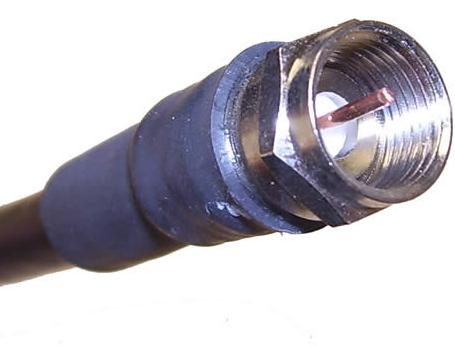Nowadays the only places one could see coaxial cables in everyday life are video equipment and TV antennas installations. Depending on the situation, different kinds of connectors might be used. F-series connector (Figure 1.) is fitting over the outer jacket of the cable. Conductor in the middle projects out of the connector. Threaded collar is being screwed down on the cable making solid connection. F-connector is mainly used for CATV and security-cameras.

Figure 1. F-type connector
There is single- and two-piece connectors. In the two-piece connector design, separate metal sleeve needs to be put on cable before the collar part needs to be installed. From the experience, the one-piece proven to be more effective, since less parts mean less fumbling. The two-piece design however is being widely used in the CATV industry. Single-piece F-type connector attaches to the end of coax cable by being screwed on.

Figure 2. N-type connector
Another connector is the N-series shown in Figure 2. It is having same design as F-type with only difference of additional pin around center conductor. N-series connector is used for video backbone applications and thicknet cables for data.
Commercial networks using coaxial cable typically use third type of connector – the BNC connector. It has middle part as in N-type, and it is deployed by screwing at the end of the cable. The middle part of connector might require some basic soldering during installation. The sides of the connector are shaped in a way that connection could be established by screwing ends of the cables together (Figure 3). Different BNC connectors need to be used for different impedance in coaxial cable. Options are 75 ohm, 50, ohm, and 93 ohm. Video over E1 and CCTV type video over fiber products use BNC type connectors, as well as E1 75 ohm type ports for E1 muxes are still using these as standard.

Figure 3. BNC connector and its components


